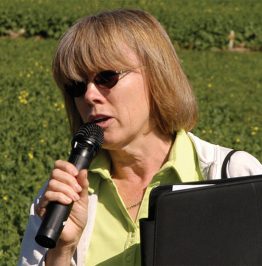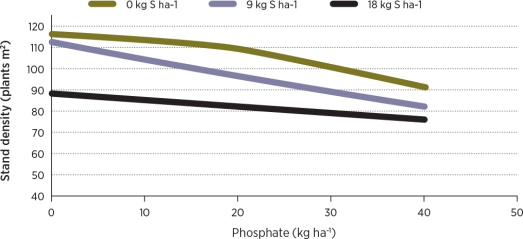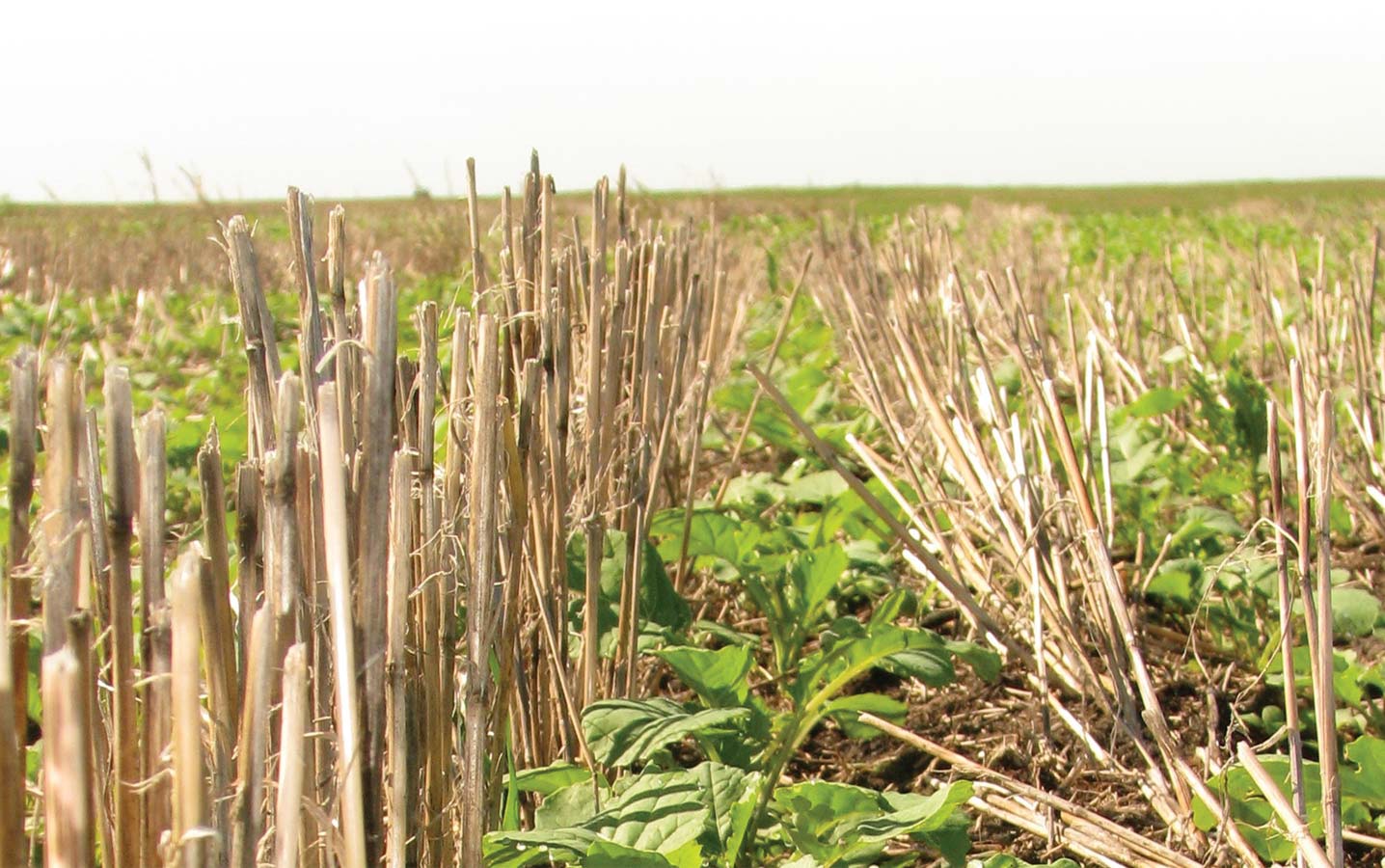Product and placement
Canola stand density can be significantly reduced when seed-placed phosphate and sulphur fertilizers are used in combination, with sulphur being particularly damaging.
Cynthia Grant with Agriculture and Agri-Food Canada (AAFC) led this broad study, using field, growth chamber and laboratory trials in Alberta, Saskatchewan, Manitoba, Ontario and Quebec to evaluate improved practices for sulphur (S), phosphate (P) and nitrogen (N) management in canola.

The objectives were to determine: (1) What are safe rates of P and S blends that can be seed-placed across a range of environments? (2) Do traditional and enhanced efficiency P and S fertilizers differ in their effect on seedling damage, nutrient use efficiency, crop yield, and canola quality when applied alone and in blends across a range of environments? (3) How does preceding crop (flax, wheat or canola) influence soil quality, microbial activity, canola yield, crop quality and rate of N and S fertilizers needed for optimum crop yield and quality? (4) How do various novel S fertilizer sources influence canola yield and quality for biodiesel production?
OBJECTIVES 1 AND 2 RESULTS
Study 1 looked at the first two objectives. Study 1a evaluated various combinations of seed-placed P and S fertilizer, using different forms and rates, to determine the effect on seedling damage, crop yield, and quality of hybrid canola.
About half the site years showed seedling toxicity with excess rates of monoammonium phosphate + ammonium sulphate (MAP + AS) or ammonium polyphosphate + ammonium thiosulphate (APP + ATS) in combination. Seed-placed P and S significantly reduced stand density at several of the sites, with the effect of S being particularly damaging.
Microessentials-15 (MES15) or the rapid release sulphur (RRS) product occasionally reduced seedling damage but did not generally increase final seed yield as compared to the traditional MAP+AS.
Seed yield increased with the application of P and S at two-thirds of the sites, with highest yield occurring when both nutrients were applied. Yield response to P and S varied considerably from site to site and was generally not strongly affected by the source of fertilizer. In contrast, where the yield response to S was strong, yield tended to be greater with the AS sources than with the other, possibly more slowly available forms.
Study 1b assessed seedling damage from combinations of seed-placed P and S fertilizer rates in a controlled environment. Treatments included 0, 10, 20, 30, 40 and 50 kg S/ha as ammonium sulfate (21-0-0-24) alone, and the same rates in combination with 15 and 30 kg P205/ha as monoammonium phosphate (12-51-0).
All napus cultivars could tolerate up to 30 kg S/ha, 66 kg P2O5/ha and 26 kg N/ha when applied together in the MES15 formulation.
Controlled environment studies using various Saskatchewan soil types showed no difference in biomass yield among the three S fertilizers on the Brown and Black soils. However, on Gray soils, which tend to be more S-deficient than the Brown or Black soils, biomass yield was highest for AS, followed by ATS and then NPS.

OBJECTIVE 3 RESULTS
Study 2 covered the third objective. Flax, canola and wheat were grown in the first year of a two-year cropping sequence. Researchers applied recommended rates of N, S and P for the location and crop, based on soil test values. The following year canola was grown after all three preceding crops, using a standard rate of 20 kg P2O5/ha as seed-placed MAP, with varying rates and sources of N and S fertilizer. The N source in year two was 75 percent ESN and 25 percent urea side-banded at seeding. The sulphur was side-banded as ammonium sulphate (21-0-0-24).
Canola yield tended to be the highest after wheat and the lowest after canola. Highest yields generally occurred when both N and S were applied at moderate to high levels.
Canola yields may be lower on canola stubble because the preceding canola crop removed more nutrients from the soil than the preceding wheat crop. Increasing fertilizer rates for canola on canola did seem to provide some help, although low canola yields following a canola crop were not solely due to enhanced N depletion. Increased disease pressure in canola following canola may also play a role.
On S-deficient sites, low S supply prevented the crop from responding efficiently to N applications. At one location, application of N in the absence of S led to no increase or a slight decrease in seed yield, indicating a severe S deficiency.
Including canola in the rotation did not seem to harm important soil parameters such as microbial biomass, glomalin production, or associated physical characteristics such as water stable aggregation.
OBJECTIVE 4 RESULTS
Study 3 covered the fourth objective. Replicated field trials were conducted at an S deficient site near Star City, SK. Treatments included rapid release micronized elemental S fertilizer and potassium sulphate fertilizer at different application timings and placements. Rates were 20 kg/ha for S and 150 kg/ha for N.
Canola seed yield increased considerably with all sulphate-S treatments compared to the zero-S control, although seed yield tended to be slightly lower in the sideband spring and autumn broadcast treatments than the other sulphate-S treatments. Compared to zero-S control, seed yield also increased significantly with all rapid release elemental S (RRES) treatments, but the increase was much greater with autumn applied RRES than with spring applied RRES. Autumn applied RRES produced only slightly lower and spring applied RRES produced much lower seed yield than the highest yielding spring applied sulphate-S broadcast pre-till or seedrow-placed S treatments.
Principal investigator: Cynthia Grant, Agriculture and Agri-Food Canada, Brandon, MB
Funded collaborators: Sukhdev. S. Mahli, Brian Beres, Denis Pageau,
Jean Lafond
Non-funded collaborators: Jeff Schoenau, Fran Walley, John Heard,
Don Flaten, Tarlok S. Sahota, Brian Hellegards, Laryssa Grenkow





